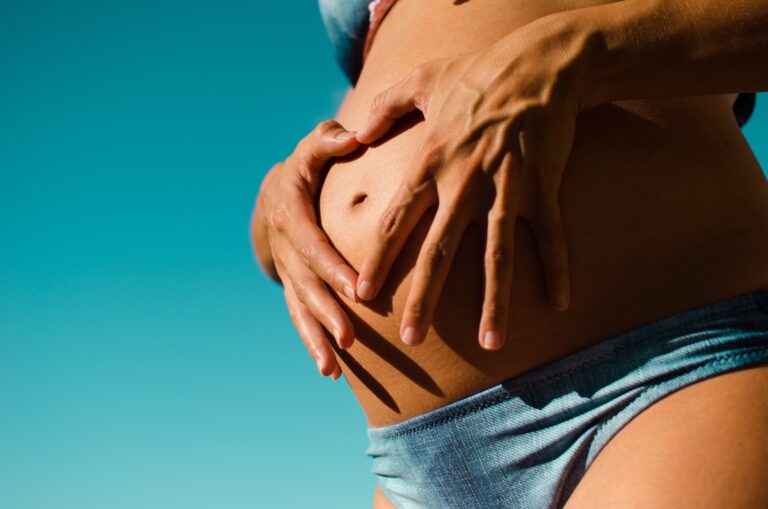If you’re close to or passed your due date, chances are you’re eager for baby to come out. So it’s common to seek out tips and tricks that could help get things going, like pineapple juice, spicy food, or exercise.
Some people believe that sex can speed up labor because semen contains a prostaglandin similar to the drug used to induce labor — pitocin. But is sex really the best way to get your body into labor?
How long after sex can labor start?
There’s a lot of hype out there about whether having sex will kickstart your labor. However, the research isn’t clear.
A 2022 study published in American Family Physician found that having sex does not cause labor to begin earlier than would have occurred on its own for women who had a low-risk pregnancy. The researchers believe that the prostaglandins and uterine contractions produced by sex are simply amplifying what’s already happening naturally.
During unprotected sex, the physical rubbing and touching of the penis against the cervix stimulates the release of hormones called prostaglandins and oxytocin. These are two key hormones that help prepare the body for labor and delivery. Prostaglandins soften and loosen the cervix, while oxytocin triggers contractions of the uterus. Oxytocin is so important that it’s used in a synthetic form for medically induced labor, such as Pitocin, which you may be given over an IV if you need to be induced in the hospital.
Some people also believe that orgasms may help speed up labor because they often produce uterine contractions. While this is not proven, it’s possible that these post-climax contractions could be helpful for those who are past their due dates and trying to induce on their own. In addition, nipple stimulation has also been shown to increase oxytocin levels and can be done in many ways, such as by rolling one or both nipples between your hands for up to three hours per day.
The first stage
The first stage of labor is characterized by uterine contractions that become stronger and more regular over time. These contractions cause your cervix to thin, soften and shorten, also known as dilation and effacement, creating a birth canal large enough for your baby to pass through. You may also notice a clear, pink or slightly bloody discharge from your vagina as the cervix begins to open.
In this phase, your doctor or midwife will monitor you closely to ensure that everything is progressing normally. During this time, you can expect to have painful contractions that occur every three or four minutes and last about 60 seconds each. You will likely need to use the toilet often, as you could experience a strong urge to do so due to your baby’s head pushing against your rectum.
While there is no definitive proof that sex can trigger labor, many women find it helpful to have sex during this time because it releases prostaglandins, which are thought to help trigger uterine contractions and oxytocin. However, it’s important to remember that if your water has already broken, having sex can increase the risk of infection.
You can also try other natural ways of triggering labor, such as long walks or spicy foods. But it’s important to remember that there is no definitive proof that these methods work, and your baby will come when it’s ready.
The second stage
During the second stage of labor, your cervix becomes fully dilated and you will feel an urge to push. This is called ‘transition’ and it’s important to wait for the right moment to start pushing because you may not get the chance again for several hours. During this time, your contractions will be stronger and closer together and can last 60 to 90 seconds. It’s also normal to experience pressure in your lower back and rectum during this stage.
Towards the end of this phase, you’ll probably have a ‘bloody show’ – a discharge of a plug of mucus that is usually red or bloody. This could happen the day you go into labour or up to a week beforehand.
At this point, the balance of prostaglandins and oxytocin is in favour and this means that it’s safe to begin labor. However, it’s important to note that having sex at the end of your pregnancy won’t necessarily cause your contractions to start. Instead, it will help speed up the process once it’s started.
After you’ve given birth, the third stage of labour will involve delivering the placenta. This normally happens within an hour, but can take a little longer. You’ll need to keep a close eye on your temperature and blood pressure and let your healthcare provider know if you start bleeding heavily.
The third stage
If you’re close to — or past — your due date, it’s likely you want to get things moving a little faster. It’s tempting to try whatever you can to trigger your labor, from taking long walks to eating spicy food. But don’t jump under the sheets just yet, because research hasn’t proven that orgasms actually kickstart your labor unless you’re full-term or overdue.
In the third stage of labor, contractions become stronger and closer together and last 60 to 90 seconds each. They’ll probably also feel like a wave that comes over your whole body, including your lower back and pelvis. During this stage, your birth partner can stay with you (although they’ll need to leave once the uterus is fully dilated).
Your body makes a hormone called oxytocin during sex, which thins your blood vessels and encourages your cervix to contract. It’s also the main reason why, if your water breaks before you go into labor, doctors will likely administer an injection of oxytocin or another similar medication to help your uterus start contracting.
During the final stage of pregnancy, doctors will also use a drug known as Pitocin to help your uterus fully dilate and deliver the placenta. If your baby is born vaginally, it can take an hour or so to separate the placenta from your uterus, but skin-to-skin with your newborn and a first breastfeed will be encouraged while you wait for the placenta to be delivered.
See Also:



